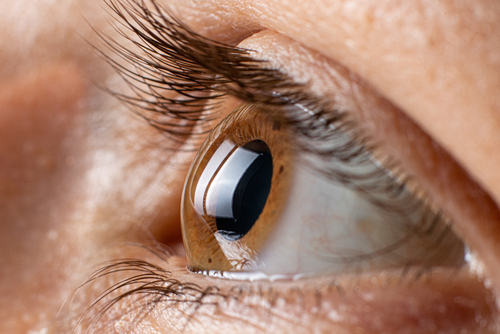What Is Keratoconus?

Keratoconus is an eye condition that causes thinning and bulging of the cornea. It happens slowly over a long period and usually affects younger people between the ages of 10 and 25.
The cornea helps refract light through your eye. When it begins to bulge, it affects the way light passes through it, causing blurry vision.
A stronger eye prescription can correct mild keratoconus. But as long as the cornea continues to bulge, your eyesight will continue to worsen.
Luckily, there’s a treatment that is often able to stop the progression of keratoconus. Keep reading to learn more about keratoconus and how you can treat it.
What Causes Keratoconus?
The actual cause of keratoconus is still unknown. But, it mainly affects young adults and adolescents.
There are other factors associated with it, as well. These factors include:
- Frequent eye rubbing
- A family history of keratoconus
- Medical conditions like asthma, retinitis pigmentosa, and Ehlers-Danlos Syndrome
If you or your child is at risk for keratoconus, it’s essential to have regular eye exams. Also, be sure to share your medical history with your eye doctor.
If diagnosed in the early stages, it’s easier to stop the progression of the condition. Halting the progression of keratoconus can prevent significant corneal warping.
What are the Symptoms of Keratoconus?
The main symptom of keratoconus is the bulge it causes in your cornea. Once it grows big enough, other people can see this bulge in your eye.
The bulge causes other symptoms to arise in your vision. These symptoms include blurry vision, light sensitivity, and frequent prescription changes.
If keratoconus goes untreated, the bulge will continue to grow. As it gets larger, the visual disturbances it causes will worsen. That’s why your eye prescription will continue to change.
These symptoms are like the symptoms of other eye conditions. They resemble the effects a refractive error may have on your eyesight, especially in younger patients.
To be sure you have keratoconus, you need a diagnosis from an eye doctor. They will tell for sure if you have it or if your vision problems are from something like astigmatism.
How is Keratoconus Treated?
The primary treatment for keratoconus is a more powerful prescription or better contacts. In some cases, you can have contacts made to fit the cone-like shape of your cornea.
But these measures can only manage the condition. They cannot stop or reverse its progression. The best treatment to slow or stop the bulging is something called corneal cross-linking or CXL.
CXL is an outpatient treatment done at your eye doctor’s office. It uses riboflavin eye drops and ultraviolet (UV) light to strengthen your cornea.
The ultraviolet light gets shined in your eyes to activate the riboflavin. Activating the riboflavin strengthens the bonds between collagen fibers in your cornea.
These stronger, more rigid bonds prevent the cornea from thinning and bulging. Often, this treatment can stop the progression of keratoconus.
Although, it cannot reverse any bulging of the cornea that has already occurred. So, cross-linking is most effective in the early stages of keratoconus as it can prevent further vision loss.
If keratoconus isn’t treated early enough, the cornea can bulge so much that it causes vision loss. At that point, the only treatment option is a corneal transplant.
A corneal transplant is a more serious treatment than CXL, but it can restore your vision.
Are you or your child exhibiting signs of keratoconus? It’s vital to see your eye doctor right away for prompt diagnosis and treatment.
Schedule an appointment at Berg-Feinfield in Sherman Oaks, CA. Vision loss from keratoconus is preventable with timely treatment!








